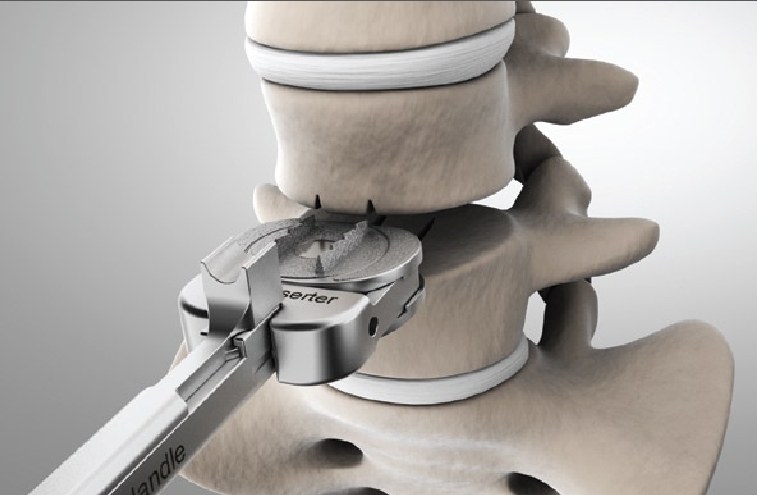Case Reports
doi: 10.3892/mco.2021.2366.
Epub 2021 Aug 8.
Affiliations
Affiliations
- 1 Department of Neurosurgery, University Hospital of Crete, Heraklion 71500, Greece.
- 2 Department of Orthopaedics and Traumatology, ‘251’ Hellenic Air Force General Hospital of Athens, Athens 11525, Greece.
- 3 Department of Pathology, General Hospital of Chania, Chania 73300, Greece.
- 4 Department of Internal Medicine, University Hospital of Crete, Heraklion 71500, Greece.
- 5 Department of Orthopaedics and Trauma, Venizeleion General Hospital of Heraklion, Heraklion 71409, Greece.
Item in Clipboard
Case Reports
Dimitris A Karabetsos et al.
Mol Clin Oncol.
2021 Oct.
Display options
Format
doi: 10.3892/mco.2021.2366.
Epub 2021 Aug 8.
Affiliations
- 1 Department of Neurosurgery, University Hospital of Crete, Heraklion 71500, Greece.
- 2 Department of Orthopaedics and Traumatology, ‘251’ Hellenic Air Force General Hospital of Athens, Athens 11525, Greece.
- 3 Department of Pathology, General Hospital of Chania, Chania 73300, Greece.
- 4 Department of Internal Medicine, University Hospital of Crete, Heraklion 71500, Greece.
- 5 Department of Orthopaedics and Trauma, Venizeleion General Hospital of Heraklion, Heraklion 71409, Greece.
Item in Clipboard
Display options
Format
Abstract
Spinal schwannomas account for one third of primary spinal neoplasms. Clinical presentation is related to the tumor location. An atypical case of acute paraplegia following a fall, on the ground of a thoracolumbar schwannoma, without intratumoral hemorrhage, in a previously asymptomatic patient is reported. A 58-year-old male patient presented with acute paraplegia, and urinary and bowel incontinence, following a fall. The patient had no previous history of back and/or leg pain or neurological symptoms. Magnetic resonance imaging revealed a subdural mass, as well as a fracture of the right T12-L1 facet joint and the right transverse process. The patient underwent emergency T11-L1 wide laminectomy, exploration of the subdural space and T10-L2 posterolateral transpedicular stabilization and fusion. An intradural, extramedullary mass, causing severe cord compression, was found and excised. Pathology revealed schwannoma, without intratumoral hemorrhage. The patient recovered completely 6 months postoperatively. To the best of our knowledge, this is the first report of spinal intradural schwannoma causing sudden paraplegia in a previously asymptomatic patient in the setting of trauma, without intratumoral hemorrhage. Emergency canal decompression and complete excision of the tumor represent the optimal management of such cases.
Keywords:
intratumoral hemorrhage; lumbar spine; paraplegia; schwannoma; spinal tumor.
Copyright © 2020, Spandidos Publications.
Conflict of interest statement
The authors declare that they have no competing interests.
Figures

Figure 1
Emergency pre-operative MRI revealed a…
Figure 1
Emergency pre-operative MRI revealed a subdural mass at the T12-L1 level limited to…
Figure 1
Emergency pre-operative MRI revealed a subdural mass at the T12-L1 level limited to the subdural space, without extension to the pedicle (sagittal and axial view). The arrows indicate the subdural mass. MRI, magnetic resonance imaging.

Figure 2
Peripheral section of the cellular…
Figure 2
Peripheral section of the cellular area (Antoni A) of Schwannoma with numerous Verocay…
Figure 2
Peripheral section of the cellular area (Antoni A) of Schwannoma with numerous Verocay bodies (H&E stain). a, peripheral bleeding due to the removal handling or excision handling; b, blood vessels; and arrows, Verocay bodies. Scale bar, 1 mm. H&E, hematoxylin and eosin.

Figure 3
Comparative MRI revealed complete restoration…
Figure 3
Comparative MRI revealed complete restoration of the spinal canal. (A) Preoperative, (B) 6…
Figure 3
Comparative MRI revealed complete restoration of the spinal canal. (A) Preoperative, (B) 6 months, and (C) 44 months postoperative. MRI, magnetic resonance imaging.
Grant support
Cite

